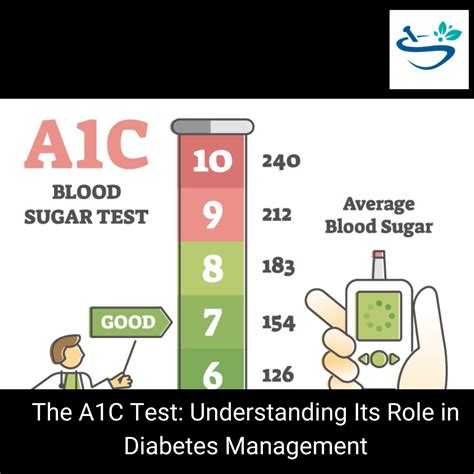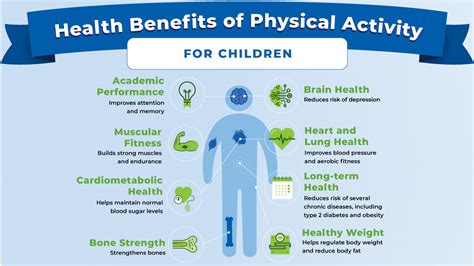Intro
Boost your health with 5 ways to achieve a healthy A1c level, managing diabetes through balanced diets, regular exercise, and stress reduction, improving blood sugar control and overall well-being.
Maintaining a healthy A1c level is crucial for individuals with diabetes, as it helps to prevent complications and ensures overall well-being. The A1c test measures the average blood glucose levels over the past 2-3 months, providing valuable insights into how well diabetes is being managed. For individuals with diabetes, the American Diabetes Association recommends an A1c goal of less than 7%, while for those without diabetes, an A1c level below 5.7% is considered normal. Achieving and maintaining a healthy A1c level requires a combination of lifestyle modifications, dietary changes, and, if necessary, medication. In this article, we will explore 5 ways to achieve a healthy A1c level, discussing the importance of each approach and providing practical tips for implementation.
A healthy A1c level is not just about managing diabetes; it's also about reducing the risk of heart disease, kidney damage, and other complications associated with high blood sugar levels. By adopting healthy habits and making informed choices, individuals can take control of their A1c levels and improve their overall health. Whether you're living with diabetes or seeking to prevent its development, understanding the factors that influence A1c levels is essential. This knowledge empowers individuals to make positive changes, leading to better health outcomes and an improved quality of life.
The journey to achieving a healthy A1c level begins with education and awareness. Understanding what A1c is, how it's measured, and its significance in diabetes management is the first step. A1c, or hemoglobin A1c, is a form of hemoglobin that is bound to glucose. The A1c test measures the percentage of hemoglobin that has glucose attached, reflecting average blood glucose levels over the preceding 2-3 months. This information is vital for healthcare providers, as it helps them assess the effectiveness of current treatments and make adjustments as needed. For individuals with diabetes, regular A1c tests are a critical component of their care plan, providing a clear picture of their blood sugar control over time.
Understanding A1c and Its Importance

Factors Influencing A1c Levels
Several factors can influence A1c levels, including diet, physical activity, medication adherence, and overall health. Diet plays a significant role, as the types and amounts of carbohydrates consumed directly impact blood glucose levels. Regular physical activity helps the body use insulin more efficiently, lowering blood sugar levels. For individuals on medication, adhering to the prescribed regimen is crucial for maintaining healthy A1c levels. Additionally, other health conditions and certain medications can affect A1c results, making it essential to consider these factors when interpreting test results.Healthy Diet and A1c Management

Nutritional Considerations for A1c Control
Nutritional considerations play a vital role in A1c control. The glycemic index (GI) is a useful tool for making informed food choices, as it ranks foods based on how quickly they raise blood sugar levels. Choosing foods with a lower GI, such as whole grains, non-starchy vegetables, and most fruits, can help regulate blood glucose levels. Additionally, staying hydrated by drinking plenty of water and limiting sugary beverages is essential. For individuals with specific dietary needs or restrictions, consulting with a registered dietitian or a healthcare provider can provide personalized guidance on managing A1c levels through diet.Physical Activity and A1c Levels

Creating an Exercise Plan for A1c Control
Creating an exercise plan that suits individual preferences and fitness levels is essential for maintaining consistency and enjoyment. It's beneficial to start slowly and gradually increase the intensity and duration of workouts. For those who are new to exercise or have been inactive for a while, beginning with short, manageable sessions and gradually increasing the duration can help build endurance and confidence. Incorporating physical activity into daily routines, such as taking the stairs instead of the elevator or walking to work, can also contribute to overall fitness and A1c management.Stress Management and A1c Levels

Techniques for Managing Stress
Techniques for managing stress are diverse and can be tailored to individual preferences and lifestyles. Mindfulness practices, such as meditation and mindfulness-based stress reduction (MBSR), have been shown to reduce stress and improve blood sugar control. Physical activity, as mentioned earlier, is also a potent stress-reducer. Setting realistic goals, prioritizing tasks, and taking regular breaks can help manage workload and personal stress. For some, creative pursuits like painting, writing, or music can provide an outlet for stress and promote relaxation.Medication Adherence and A1c Control

Strategies for Improving Medication Adherence
Strategies for improving medication adherence include simplifying the medication regimen, using reminders, and monitoring progress. Simplifying the regimen might involve taking medications at the same time each day or using a combination pill. Reminders can be set on phones, placed on refrigerator doors, or given by family members. Monitoring progress through regular A1c tests and tracking blood glucose levels can provide motivation and insight into the effectiveness of the current treatment plan. Open communication with healthcare providers is key to addressing any barriers to adherence and making necessary adjustments.Monitoring and Adjusting

The Role of Technology in Monitoring and Adjusting
Technology plays an increasingly important role in monitoring and adjusting diabetes management plans. Continuous glucose monitors (CGMs) and flash glucose monitors provide real-time data on blood glucose levels, offering insights into how different foods, activities, and medications affect glucose control. Mobile apps can track food intake, physical activity, and medication adherence, making it easier to identify patterns and areas for improvement. Telehealth services enable more frequent and convenient communication with healthcare providers, facilitating timely adjustments to treatment plans.To further assist with your queries, we have included an FAQ section below:
What is a normal A1c level?
+A normal A1c level is below 5.7% for individuals without diabetes. For those with diabetes, the American Diabetes Association recommends an A1c goal of less than 7%.
How often should I get an A1c test?
+The frequency of A1c testing depends on the individual's diabetes management plan and their healthcare provider's recommendations. Generally, A1c tests are done every 3-6 months.
Can lifestyle changes alone lower A1c levels?
+Yes, lifestyle changes such as a healthy diet, regular physical activity, stress management, and adequate sleep can significantly lower A1c levels. For some individuals, especially those with prediabetes or newly diagnosed type 2 diabetes, lifestyle changes alone may be sufficient to achieve a healthy A1c level.
In conclusion, achieving and maintaining a healthy A1c level requires a multifaceted approach that includes a balanced diet, regular physical activity, effective stress management, medication adherence, and continuous monitoring and adjustment of the treatment plan. By understanding the factors that influence A1c levels and making informed choices, individuals can take control of their diabetes management and improve their overall health. We invite you to share your experiences, ask questions, or seek further information on managing A1c levels in the comments section below. Your engagement and feedback are invaluable in creating a supportive community focused on healthy living and diabetes management.
